Let’s get nerdy! I love sharing new recipes with you, but I want to start diving more into the food science of food too. When a recipe calls for baking soda or baking powder, what is their purpose? What’s the difference between the two?
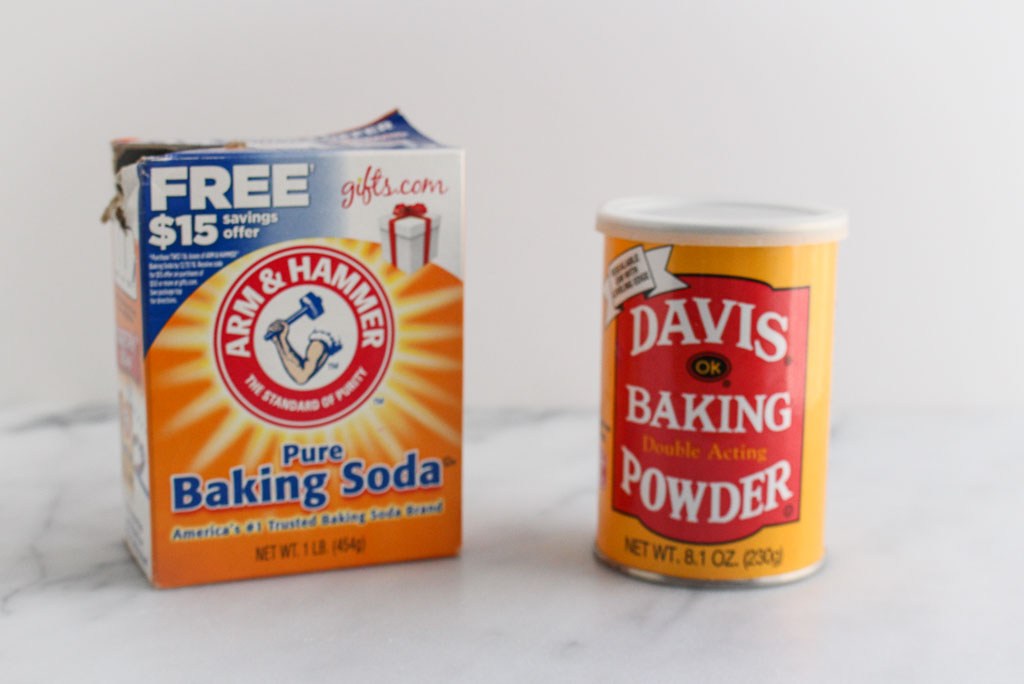
Let’s answer the first question: Is there a difference between baking soda and baking powder? YES!
My friend, who is an 8th-grade science teacher, says “Obviously, there is a difference. When you add baking soda to vinegar, it makes cool science volcanos and the other doesn’t.”
Welp, that’s all you need to know. Blog post over. Just kidding, there is so much more to learn! Baking soda and baking powder do have a lot in common, as they are both chemical leaveners, meaning they generate gas during the making and baking of a batter.
Some recipes may call for one or the other, or both, but just make sure you don’t confuse the two because they do have distinct differences.

Baking Soda:
Baking soda contains a single ingredient, sodium bicarbonate. When baking soda is combined with something acidic (think buttermilk, yogurt, citrus juice, vinegar, etc.), it produces carbon dioxide. This creates little bubbles that helps give rise to baked goods.
I know you might be thinking, I’ll just add more to get a better rise in my baked goods. Think again. Be careful not to add too much! When sodium bicarbonate is heated it produces sodium carbonate, which produced a metallic taste. No one wants a metallic tasting muffin. That metallic taste can be neutralized by the acid that is used in the recipe, while still giving our baked goods a pretty good rise.
Did you know?
You can also use baking soda to create homemade cleaners to freshen and clean up tough stains in your home. Learn ways you can use baking soda for cleaning purposes.
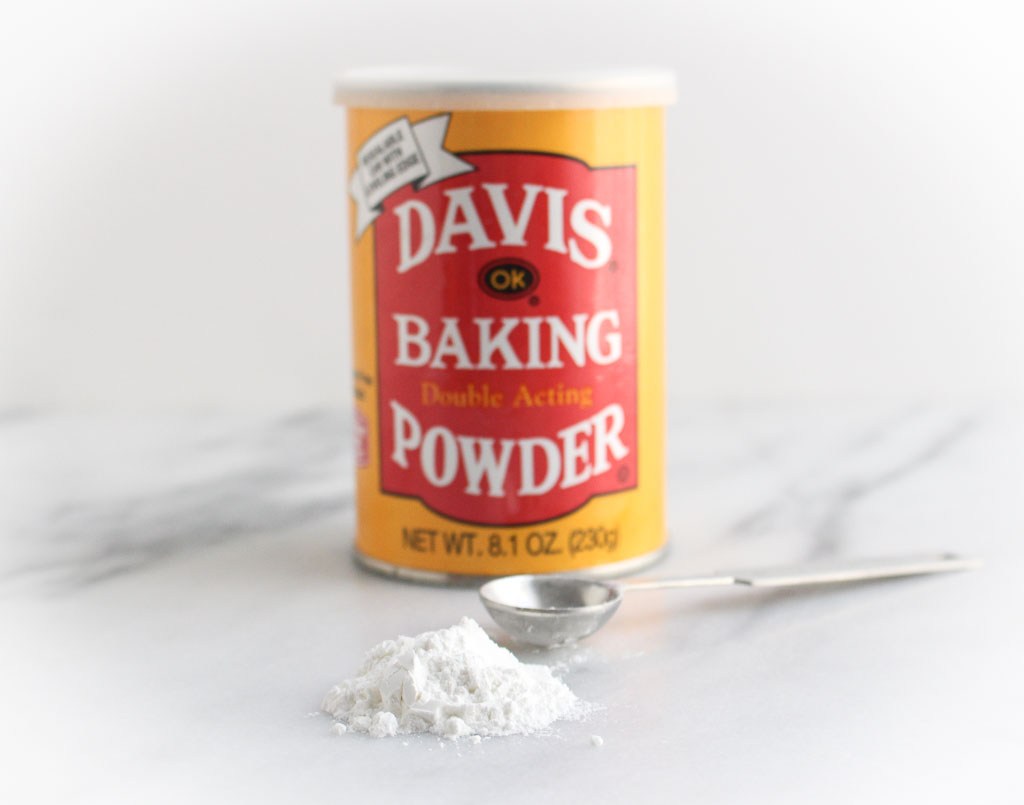
Baking Powder:
Baking powder is a mixture of baking soda and dry acid (plus, sometimes cornstarch). Yup, baking soda is one of the main ingredients in your baking powder. The acid that is typically used is cream of tartar. Cornstarch is often added in to keep the ingredients separate and dry.
The balance of acid (cream of tartar) and base (baking soda) is already balanced for you, so there will be no metallic aftertaste even if you go a little heavy handed with baking powder.
Baking powder only needs a liquid or moisture for a reaction to occur (no acid necessary). With baking powder, the chemical reaction that helps the product rise happens when the product is slowly heated. Baking powder allows for more flexibility because you can let the batter or dough sit for a little while before baking and still get the rise you’re after.
You might see some baking powders at the grocery store that say “double acting”. This means that a small amount of carbon dioxide is released and that some leavening occurs (bubbles) when the baking powder gets wet from wet ingredients, but the rest of the leavening occurs when the baked good is heated.
The bottom line:
To help you easily remember the difference between baking soda and baking powder, remember: Baking soda needs an acid. Baking powder has an acid.
Baking soda = single ingredient.
Baking powder = poof in the oven.
Pin for later!

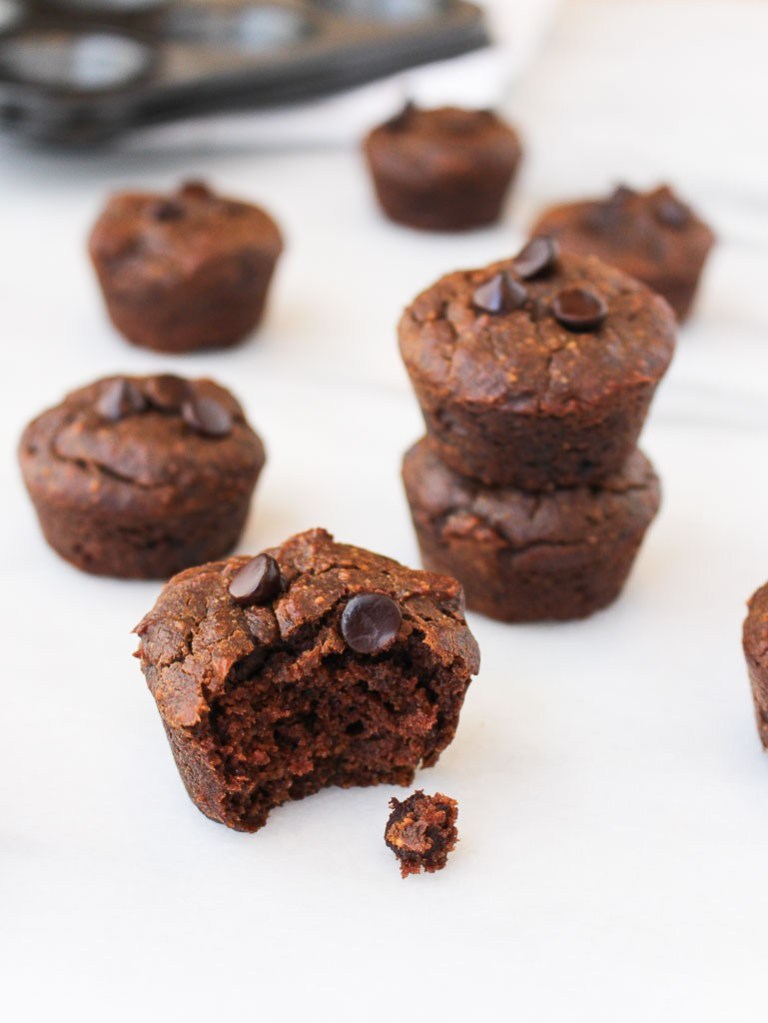

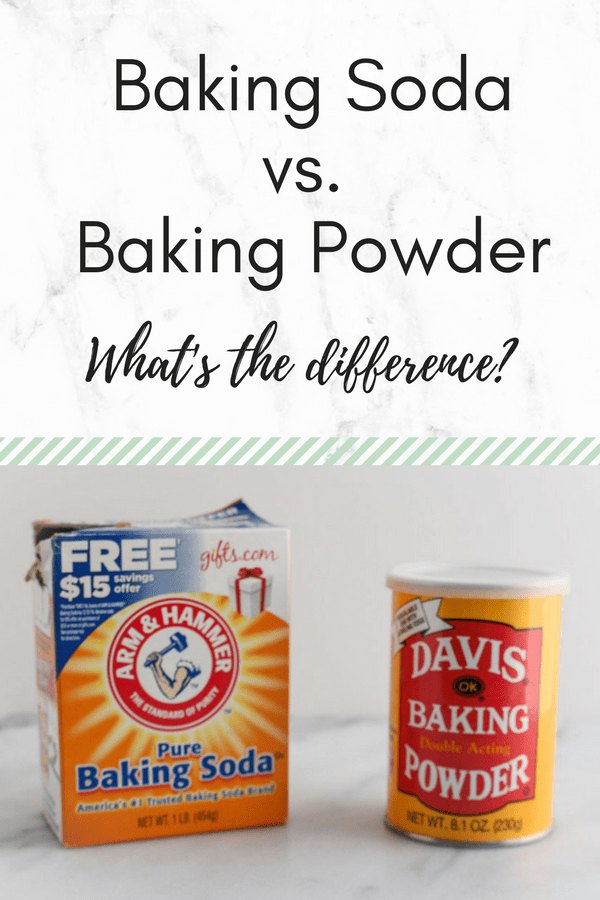




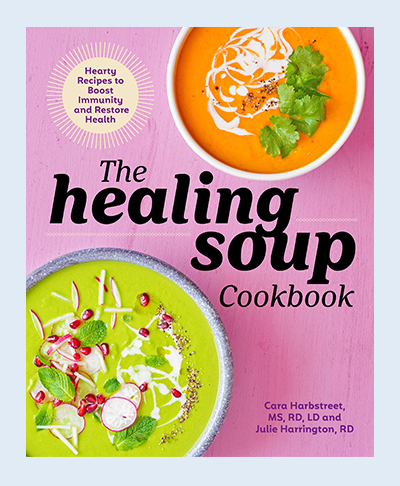
Thanks Julie – this is great education! This post is going to my “saved” box.